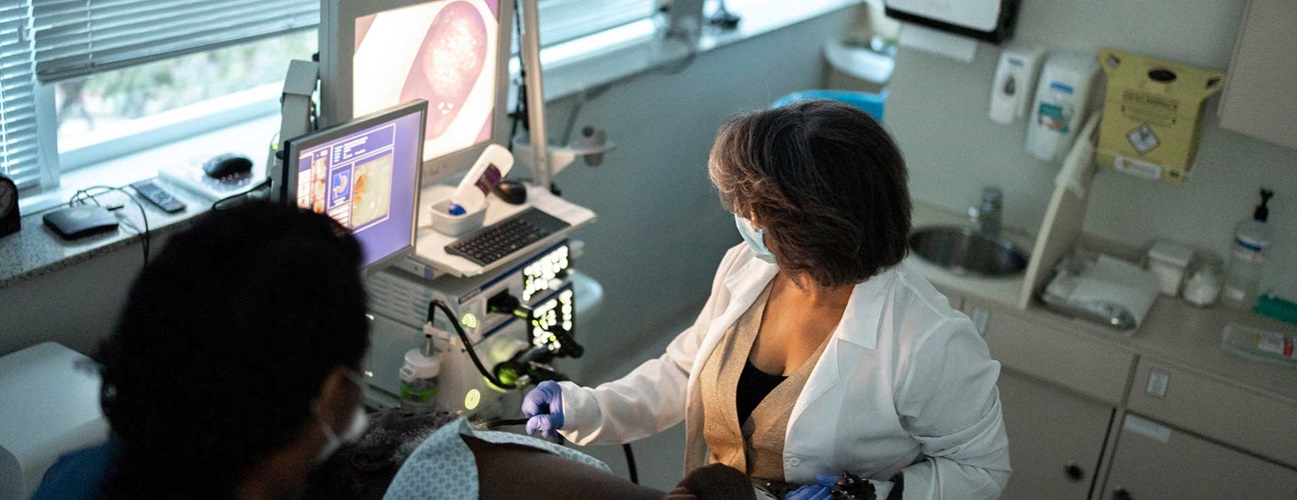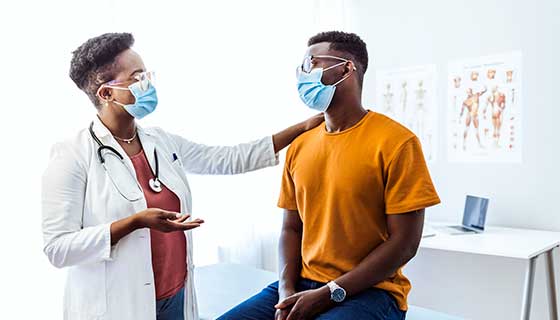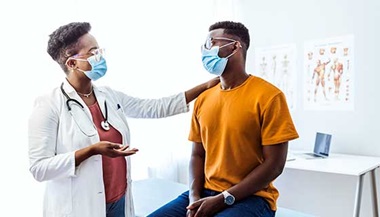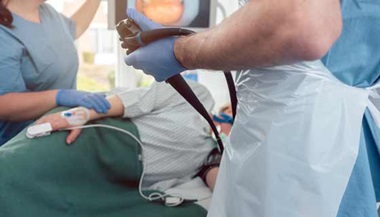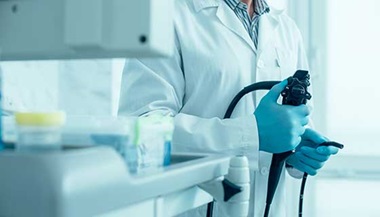Enteroscopy
When a gastroenterologist (a doctor who treats conditions of the digestive tract) suspects a problem in the small intestine, an enteroscopy can provide a look inside and access to the problem area.
What is an enteroscopy?
Enteroscopy is a procedure to examine the small intestine (small bowel) and treat issues at the same time. This part of the intestine is over 20 feet long and just 1 inch wide, which makes it difficult to access. There are several techniques a gastroenterologist may use to gain access deep into the small intestine, including video capsule endoscopy, double balloon enteroscopy, single balloon enteroscopy and spiral enteroscopy. Balloon enteroscopy and spiral enteroscopy are collectively known as deep enteroscopy.
Types of Enteroscopy
Double Balloon Enteroscopy
Sometimes called push-and-pull enteroscopy or balloon-assisted enteroscopy, double balloon enteroscopy is a nonsurgical procedure that finds and treats problems deep inside the small bowel. It uses a flexible tube with a camera (an endoscope) that is placed inside a wider tube. A gastroenterologist guides both tubes into the small intestine. Each tube has a balloon on one end. Alternately inflating and deflating the balloons and carefully pushing and pulling, the doctor can gather up the small intestine onto the outer tube, one section at a time, almost like gathering a curtain onto a curtain rod or pushing a sleeve up on your arm.
Compacting the length of the small intestine makes it easier for the inner endoscopy tube to access the entire length of the small bowel and treat problems. A gastroenterologist can introduce the double balloon device either through the mouth (antegrade approach) or the colon (retrograde approach).
Single Balloon Enteroscopy
Single balloon enteroscopy, a simplified version of the double balloon procedure, uses one balloon instead of two. Both procedures are considered safe and effective for investigating and treating problems in the small bowel.
Motorized Spiral Enteroscopy
Spiral enteroscopy uses a special tube with a rotating spiral placed over the endoscope, which allows the scope to move back and forth in the small intestine as the spiral rotates. A small motor is attached to the spiral so the doctor can control when to engage the spinning mechanism.
Spiral enteroscopy works similar to balloon enteroscopy, but it uses the spiral instead of balloons to help advance the scope. Like balloon enteroscopy, spiral enteroscopy can go deep into the small bowel. The Food and Drug Administration has not been approved spiral enteroscopy for use in the United States.
Video Capsule Endoscopy
The small intestine can also be examined after the patient swallows a pill shaped capsule with a camera that takes thousands of pictures as it passes through the digestive tract. This procedure, called capsule endoscopy, can be used to examine the entire length of the small bowel.
Who may need an enteroscopy?
Small bowel examination is useful to see and treat the entire length of the small intestine. Your doctor might recommend the procedure to:
- Remove polyps in the small intestine
- Diagnose or treat bleeding areas inside the small bowel
- Stretch or widen a stricture (abnormal narrowing of the intestine)
- Collect a foreign body stuck in the intestine, including a capsule used to examine the bowel
- Remove a stone blocking a bile duct when normal anatomy has been altered, such as after gastric bypass surgery
- Collect a tissue sample from the small intestine’s interior to be examined under a microscope (biopsy) for signs of disease
- Place a stent (a hollow cylinder) to widen or hold open a section of the small intestine
Deep enteroscopy can be used along with capsule endoscopy or imaging scans to get a better view of the area that needs treatment.
Preparing for an Enteroscopy
Depending on the details of the procedure, you may need to spend a night at the hospital. But in many cases, an enteroscopy can be performed as an outpatient procedure, meaning you can go home the same day.
The steps to prepare differ depending on the type of enteroscopy you are having. For deep enteroscopy, preparation may include:
- Following a liquid diet plus taking a laxative or enema to cleanse the bowel if your doctor is using a retrograde approach (accessing the small intestine through the colon)
- Not eating or drinking for 12 hours before the procedure if your doctor is using an antegrade approach (inserting the endoscopy tubes through the mouth)
- Telling your doctor about all your prescription medicines and if you have allergies, and following the doctor’s instructions about if, when and how to take your prescription medications before an enteroscopy
- Arranging for someone to drive you to the treatment facility and pick you up after you are released, since sedating medications will make it unsafe for you to drive or use public transportation
What Happens During an Enteroscopy
During a balloon or spiral enteroscopy, your gastroenterologist will:
- Place an IV in your vein and give you either a sedative or anesthesia so you are comfortable and relaxed, or completely asleep, during the procedure
- Insert the endoscope with the balloon or spiral device through the mouth or anus and advance it into the small bowel
- Alternately inflate and deflate the balloon or balloons at the tip of the endoscope or engage the motorized spiral to gather the walls of the small intestine and move the scope to the area of concern
- Observe images on a screen, as well as use X-ray guidance or fluoroscopy, to examine the small intestine and to locate and treat problems
- Use tools such as a forceps, dilation device or cauterizing (heat conduction) probe to treat the deep part of the small bowel that is now accessible
The procedure and preparation are different for capsule endoscopy. Learn more about this procedure.
Recovery After an Enteroscopy
After the procedure, you will rest and recover while the effects of the sedative or anesthesia wear off. The doctor will discuss the results with you before you leave.
Depending on whether an antegrade or retrograde approach was used, you might experience:
- Sore throat
- Upset stomach
- Vomiting
- Bloating or cramping due to gas in the intestines

